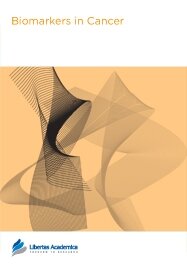

Publication Date: 26 Sep 2012
Type: Original Research
Journal: Biomarkers in Cancer
Citation: Biomarkers in Cancer 2012:4 7-17
doi: 10.4137/BIC.S10065

In order to capture the extent of exposure to polycyclic aromatic hydrocarbons (PAHs), various biomarkers have been employed. The biomarkers employed for PAHs include PAHs genetoxic end points in lymphocytes, urinary metabolites, PAH-DNA adducts, and PAH-Protein adducts. Of these, excretory 1-hydroxypyene, a metabolite of pyrene, has been used extensively as a biological monitoring indicator of exposure to PAHs. This study attempts to assess the level of this biomarker in the body fluid of 68 exposed subjects using high performance liquid chromatography HPLC. The subjects screened included auto mechanics, drivers, and fuel attendants. 1-hydroxypyrene was extracted from the urine of the subjects using solid phase extraction method. The HPLC analysis was done in isocratic mode using water:methanol (12:88 v/v) mobile phase. The stationary phase was XBridge C18 (150 × 4.6 mm) 5 µm column. The wavelength was 250 nm at a flow rate of 1.2 mL/min. The oven temperature was 30 °C and the injection volume was 20 µL. The run time was 3 minutes. The level of urinary 1-hydroxypyrene detected varied for the different categories of occupation studied. About 27% of sampled fuel attendants and 22% of auto mechanics had detectable 1-hydroxypyrene in their urine samples. There was no detectable 1-hydroxypyene in the urine samples of commercial drivers or in the urine samples of students used as controls. The results of this study showed that fuel attendants and auto mechanics have significant exposures to PAHs. So far, there is no established benchmark for level of PAHs in urine, but our findings indicate the possibility of future cancer cases in this population as a result of their occupational exposure. The study was not able to link the level of 1-hydroxypyene with the smoking habits of the subjects.
PDF (616.39 KB PDF FORMAT)
RIS citation (ENDNOTE, REFERENCE MANAGER, PROCITE, REFWORKS)
BibTex citation (BIBDESK, LATEX)
XML
PMC HTML

The editorial staff of Biomarkers in Cancer are very efficient and helpful. I am happy to work with them. I look forward to reviewing future manuscripts.
Facebook Google+ Twitter
Pinterest Tumblr YouTube